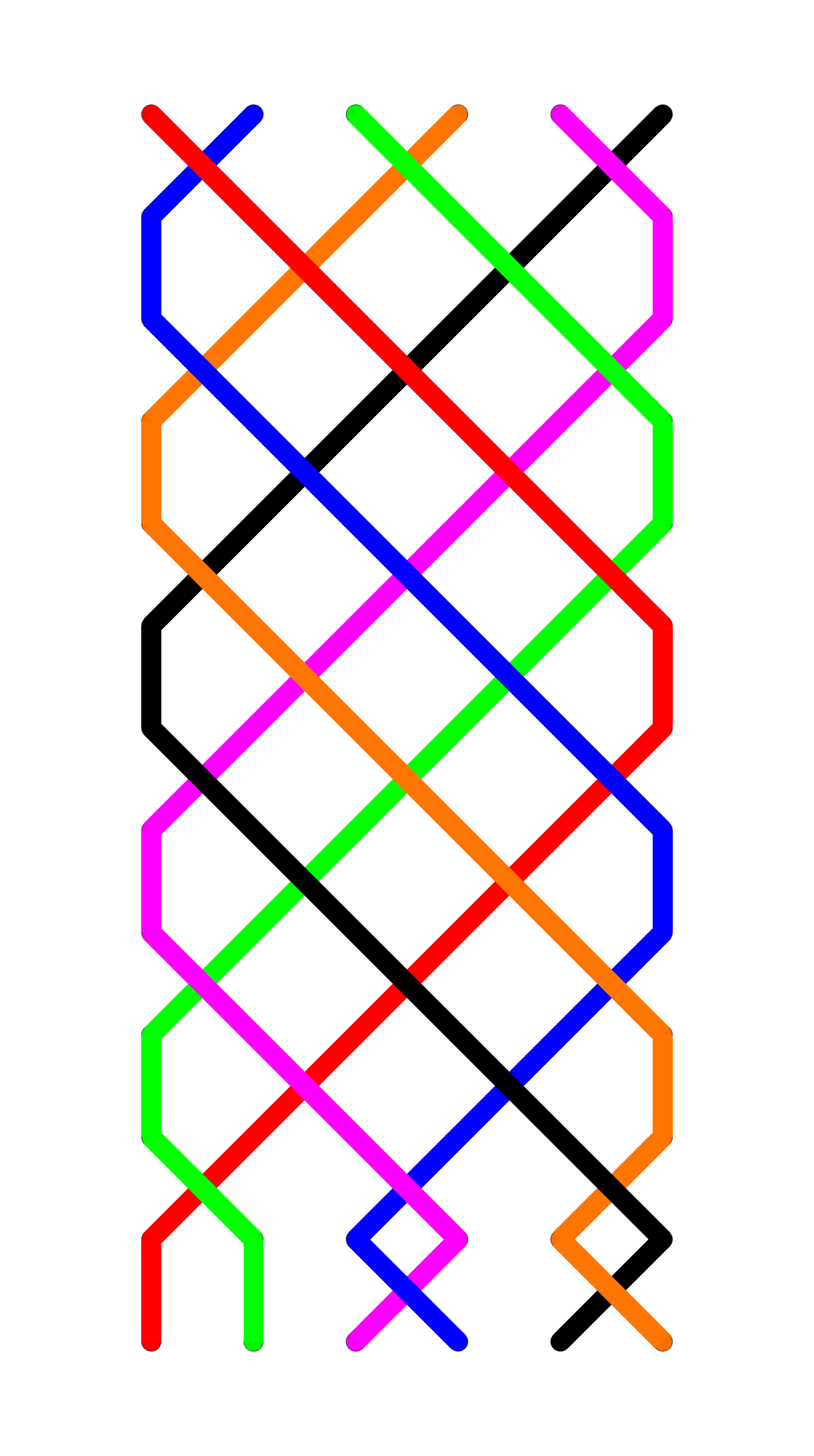Method Toolboxes for ringers
6. Method ringing
6.1. How methods are written out
 The blue line
The blue line
The following explanations are illustrated using Plain Bob Minor, however they apply to all methods.
Methods are often represented by the blue line and you will see this used in publications such as the Ringing World diary or online resources. It is called the blue line for historical reasons, although it is frequently represented by other colours.
The blue line represents the path of the bell visually. The rows are written out and a line is drawn to show the path of the chosen bell. In this case the line is drawn through the 2. The red line represents the path of the treble.
When ringing a method all the inside, or working, bells follow the same blue line, ringing the same work but starting in a different place on that line. A place bell represents the work done by each bell in the first lead of the method. All working bells ring the same work but start that work in a different place on the blue line.
If you follow the line of the 2 you will see that when it has completed the 3-4 down dodge it is in 4th place. It now continues to follow the blue line but it is now ringing the work that the 4 rang in the first lead. It has become 4th place bell. At the following lead end it becomes 6th place bell and rings the work the 6 would have ring in the first lead. The following leads it becomes first 5th and then 3rd place bells. At the end of the last lead it comes back to its starting position becoming 2nd place bell. The bells come back into rounds and the whole method can start again.
Another way of thinking about the method is through the cycle of work which is the order of work for Plain Bob Minor from the 2:
- Dodge 3-4 down, become 4th place bell
- Dodge 5-6 down, become 6th place bell
- Dodge 5-6 up, become 5th place bell
- Dodge 3-4 up, become 3rd place bell
- Ring two blows in 2nd place [make seconds]
The grid
 |
The grid is a way of representing a method visually by drawing the line through the paths of all the place bells for just one lead. The grid for Plain Bob Minor (on the right) is the same as for Plain Hunt except at the lead end. The grid can be constructed from the place notation. |
Place notation
Place notation is a way of representing a method mathematically allowing the grid to be constructed from a series of numbers which describe the method structure.
In Plain Bob Minor places are made in 1st and 6th place, indicated by the numbers 16. In the other rows all bells swap places, indicated by an x. A comma separates the lead end notation.
The notation is written for the first half of the lead and then applied in reverse order up to the lead end. The place notation for Plain Bob Minor is x16x16x16,12 At the lead end places are made in 1st and 2nd, indicated by the numbers 12.
If there are rows where places are made on every row the numbers are separated by a dot. So for Plain Bob Doubles the notation is 5.1.5.1 5, 125.
